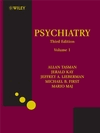Psychoanalytic Theories
Summary
Originating over one hundred years ago, Freudian psychoanalytic theory has grown and developed into a broad and diverse constellation of theories of mind. These theories trace their origin to Freud and his explorations of the dynamic unconscious and the importance of internal conflict as the prime determinant of human psychological experience. Be it an emphasis on intrapsychic compromise, the relation of the maturing individual to internalized objects and external reality, or the role of the self in the formation of the psyche, modern psychoanalysis is concerned fundamentally with the often hidden but powerful interplay of psychic processes. Differences in theory are more of degree than of kind. Although different in dramatic ways from early Freudian theory, psychoanalysis continues to be a useful and vital tool in understanding the many vagaries and complexities of the human condition.



